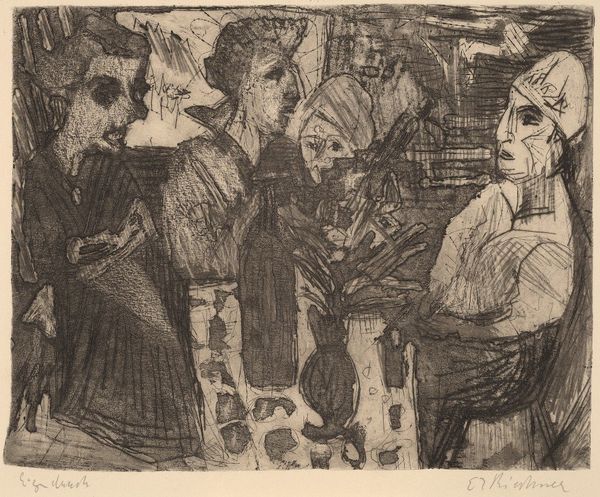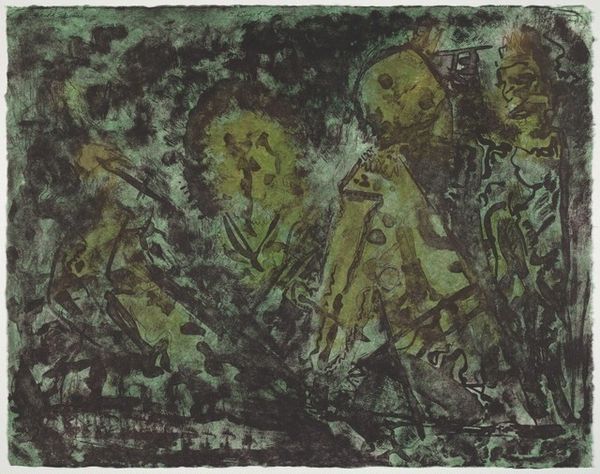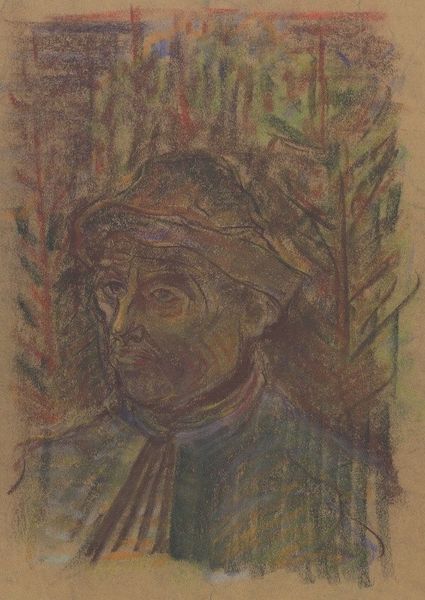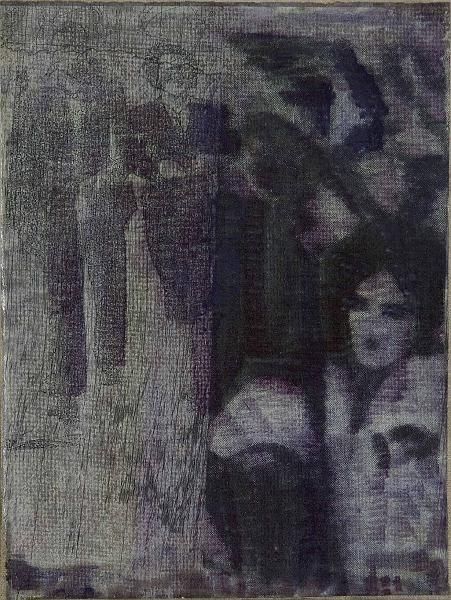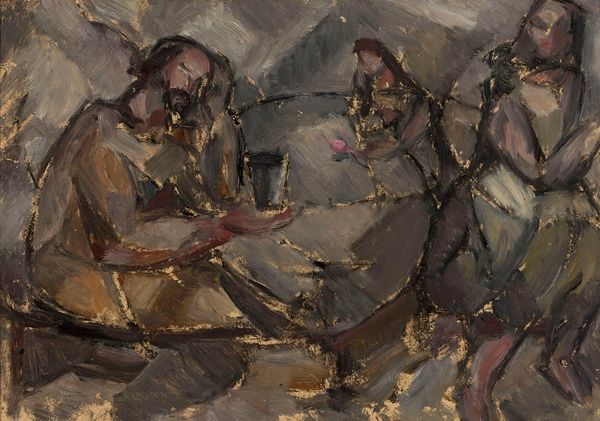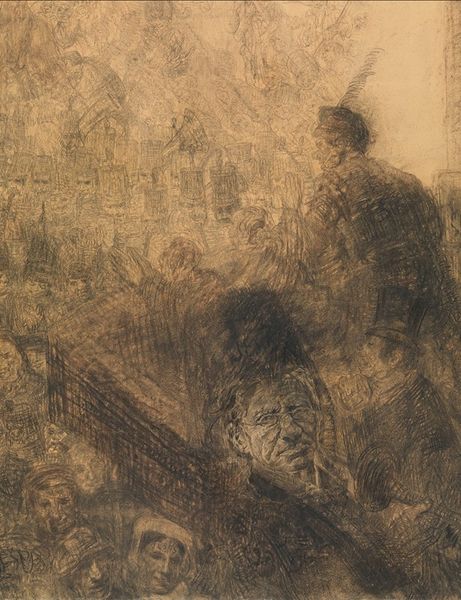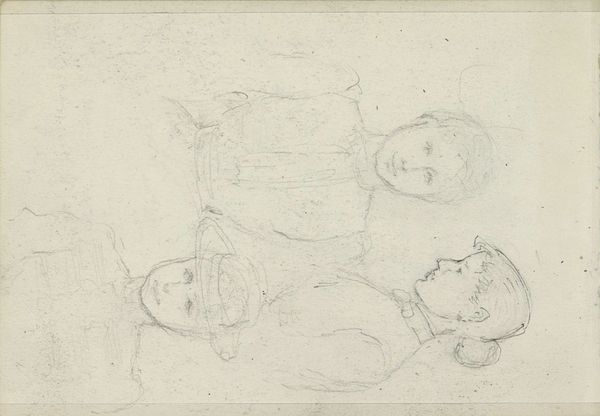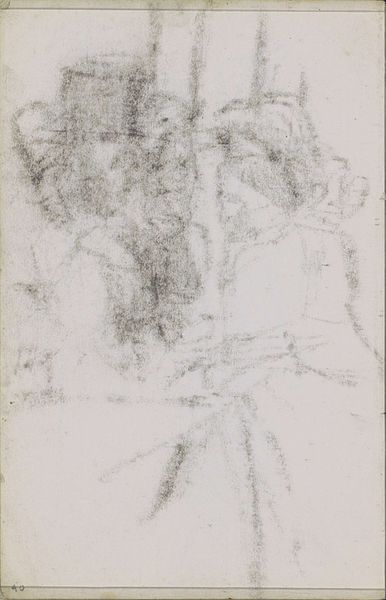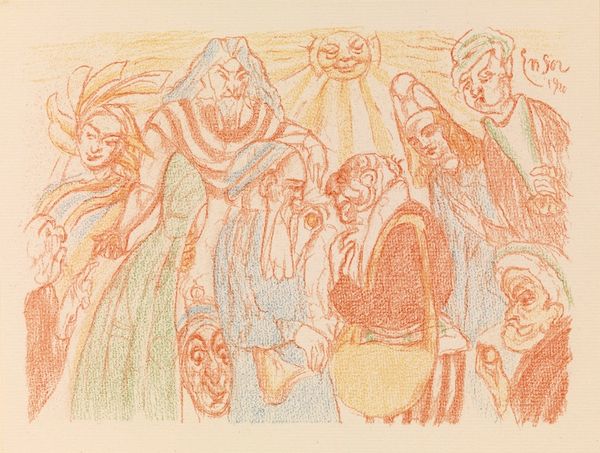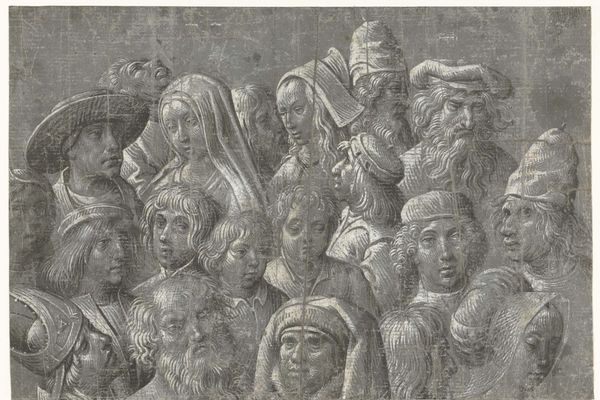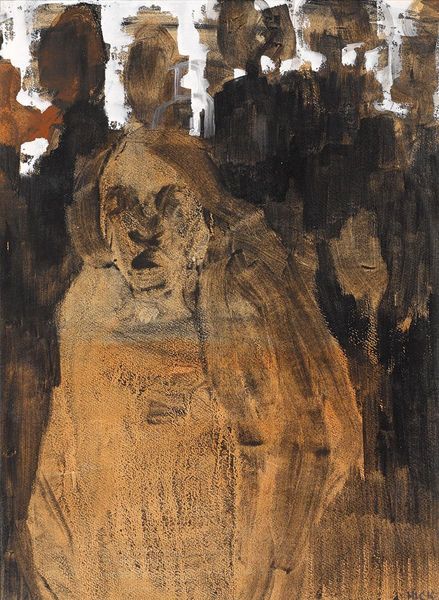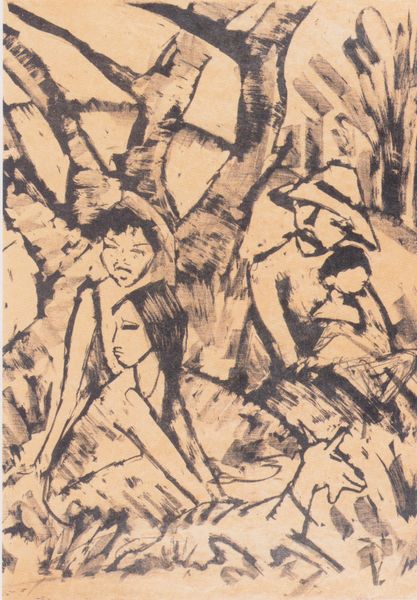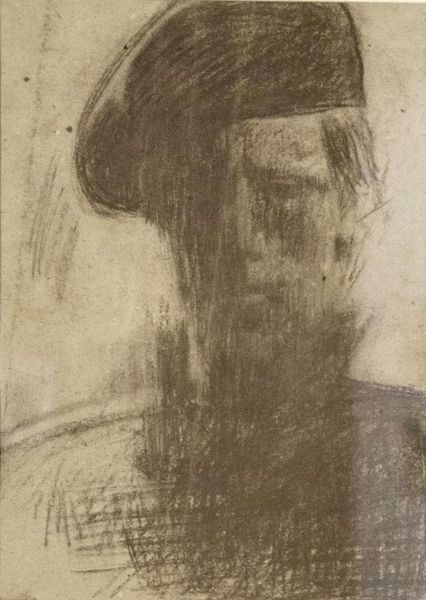
painting, oil-paint
#
portrait
#
self-portrait
#
painting
#
oil-paint
#
figuration
#
oil painting
#
painterly
#
modernism
Copyright: Armando Reveron,Fair Use
Curator: Here we have Armando Reveron's "Self-Portrait with Dolls and Beard" created in 1949. Editor: It's spectral, almost like a fading memory rendered in shades of ochre and pale yellow. The textures appear rough, immediate. Curator: Reveron's use of materials is striking, particularly during what is known as his "white period." He intentionally used rudimentary materials – rags instead of brushes, and a limited palette – often preparing his own canvases to achieve this specific atmospheric effect. Editor: And what of the dolls? The two female figures standing sentinel in the background evoke classical muses, perhaps. They possess a symbolic power, embodiments of creativity, or maybe stand-ins for an idealized feminine form? Curator: I'd argue their presence is far more pragmatic. These dolls were crucial props within his practice, substitutes for models given his reclusive lifestyle and the constraints imposed by his mental health challenges. Consider how their fixed gaze and repeated forms underscore notions of artistic repetition, and even a form of obsessive creation, or are they figures of isolation and how the mind finds companionship in objects. Editor: That’s compelling, considering the history of dolls as symbols of domesticity and idealized femininity; seeing them reworked in such a stark, somewhat unnerving portrait reframes those narratives. But perhaps Reveron is inviting us to consider not just their role in his studio but within his psyche as well. The beard obscures a good part of his face. There seems to be so much to hide behind in the symbolic form that these props and visual clues create for him. Curator: Indeed. Reveron's radical techniques challenge our assumptions of 'fine art,' collapsing hierarchies between material, artist, and subject matter. It is clear in his methods that he used any means available to convey raw expression, the internal landscape externalized by limited tools. Editor: A powerful reminder that symbols reside not just in the iconography, but in the means and conditions of creation. It enriches the work, seeing art as an invitation to look into materials, culture, and life combined.
Comments
No comments
Be the first to comment and join the conversation on the ultimate creative platform.
